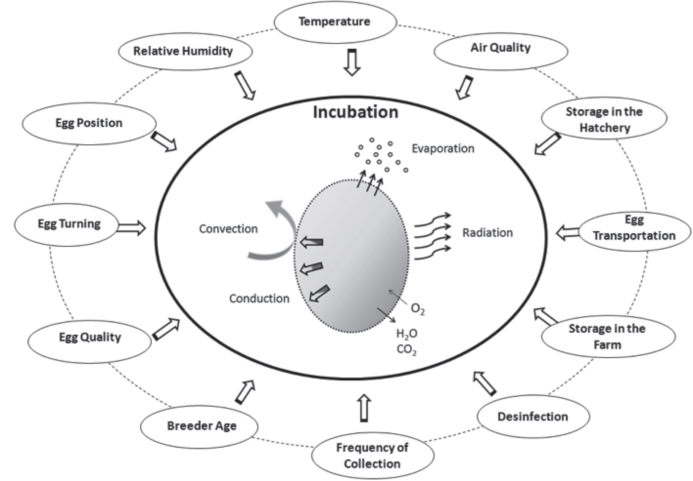Many numbers and statistics are quoted by incubator manufacturers , farmers and users to communicate their success in hatching eggs. Many muddle numbers which make it difficult to appreciate whether an incubator or hatcher is good or not.
There are 3 numbers that are important to measure to establish true performance
1. Fertility rate
2. Hatching rate
3. Throughput rate
Fertility rate is a percentage measure of the number of eggs that have shown growth when candled at day 10. Any eggs that have bloodlines, are empty, show no growth are classified as infertile. For example if you have 100 eggs placed in an incubator and you candle at day 10 and establish 85 eggs have grown and show veins and a growing embryo, then you have (85/100) = 85% fertility rate. Fertility of an egg is a function of the fertilization of the hen eggs by a rooster . A hen who has mated will be fertile between 7 and 10 days and any eggs she lays will be fertile. No incubator can improve fertility rate. If an egg is infertile - thats it...no incubator can fix that.
Hatching rate is a percentage measure of the number of fertile eggs place in an incubator vs hatched after 21 days. Any eggs that do not hatch, have pipped and died, are dead in shell are not counted as hatched. Physical number of chicks are counted as hatched. For example if you have 85 fertile eggs (candled at day 10) placed in the incubator and 80 hatch and produce chicks, then you have (80/85)= 94% hatch rate. Hatch rate is a function of the incubators ability to maintain the correct temperature and humidity, turning etc required to grow the fertile egg properly. Hatch rate presumes you have proper backup power for the incubator and also have calibrated the incubators sensors for temperature and humidity accurately. Egg turning is optimal. It also presumes you have managed and stored eggs properly prior to incubation and followed proper hatchery practices for example cleaning machines, good ventilation, proper storage of fertile eggs maintenance of equipment and placing them in the incubator correctly, preheating fertile eggs and proper transfer between incubator and hatcher timeously.
Throughput rate is a percentage measure of the number of eggs placed in the incubator vs the number of chicks hatched. It is also the combination of the fertility rate x hatching rate. For example if you have 100 eggs and 80 hatch then you have (80/100) = (85% x 94%) = 80% throughput rate, which means for every 100 fertile eggs you place in an incubator you can expect 80 chicks.
Fertility rate is the responsibility of the hen and rooster.
Hatching rate is the responsibility of the incubator and farmer.
Throughput is the joint result of all activities.
1. Incubators can't fix poor fertility and poor fertile egg storage and handling
2. Hatch rates depends on electricity and good machine maintenance and hatchery practices
3. Throughput depends on fertility and hatch rates. If either is poor, expect low numbers of chicks.
Be sure to measure these 3 numbers for each batch of eggs you incubate to help you identify issues and causes. Also it will help you determine in which area your problems exist and help you to manage the risks.

